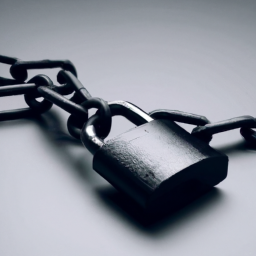Why Is Insider Threat A Concern In Cybersecurity?
In the world of cybersecurity, the concept of insider threat looms as a significant concern that cannot be ignored. The intricate systems put in place to safeguard sensitive information from external adversaries can sometimes be rendered ineffective by insiders with malicious intent or accidental negligence. This article explores the reasons why insider threat is a formidable challenge in the realm of cybersecurity, shedding light on the potential risks it poses to organizations and emphasizing the importance of preemptive measures to mitigate such threats.
Overview of Insider Threat
Definition of insider threat
Insider threat refers to the risk posed by individuals within an organization who have authorized access to systems, networks, or sensitive information, and intentionally or unintentionally misuse that access to harm the organization. These individuals can be current or former employees, contractors, or business partners who possess knowledge of the organization’s operations, systems, or data.
Types of insider threats
There are several types of insider threats that organizations need to be aware of:
-
Malicious insiders: These are individuals who purposefully exploit their authorized access for personal gain, revenge, or to benefit competitors. They may steal sensitive data, sabotage systems, or engage in fraudulent activities.
-
Negligent insiders: These insiders may unintentionally cause harm to the organization due to carelessness, lack of awareness, or inadequate training. They may accidentally disclose sensitive information, fall victim to phishing attacks, or fail to follow established security protocols.
-
Compromised insiders: Sometimes, an insider’s credentials or access rights may be compromised by external hackers. These insiders unknowingly become unwitting tools in the hands of cybercriminals, who exploit their access to carry out malicious activities.
Examples of insider threats
There have been numerous high-profile insider threat incidents that have highlighted the devastating consequences they can have on organizations:
-
Edward Snowden – NSA: Snowden, a former NSA contractor, leaked a trove of classified documents to the media in 2013, exposing extensive surveillance programs. This incident not only caused significant reputational damage to the NSA but also raised concerns about the balance between national security and individual privacy.
-
Chelsea Manning – WikiLeaks: As a United States Army intelligence analyst, Manning leaked thousands of classified documents to WikiLeaks in 2010. The leak included sensitive diplomatic cables and military information, leading to diplomatic complications and putting lives at risk.
-
Harold Martin – NSA: Martin, a former NSA contractor, was arrested in 2016 for stealing a massive amount of classified information. This incident highlighted the persistent challenge organizations face in protecting sensitive data from malicious insiders.
-
Morris Worm – First Insider Threat Incident: In 1988, Robert Tappan Morris, a Cornell University graduate student, created the first worm that spread across the early internet, disrupting thousands of systems. This incident exposed vulnerabilities in the nascent internet infrastructure and emphasized the need for robust insider threat detection and prevention measures.
-
Sergey Aleynikov – Goldman Sachs: Aleynikov, a former Goldman Sachs computer programmer, was arrested in 2009 for stealing proprietary source code on his last day at work. This incident highlighted the potential financial impact of insider threats and the need for organizations to protect their intellectual property.
Reasons Behind Insider Threats
Motives for insider threats
Insider threats can arise from a variety of motives:
-
Financial gain: One of the primary motives for insider threats is illicit financial gain. Individuals may exploit their position within an organization to steal sensitive information, trade secrets, or financial data for personal profit.
-
Revenge or disgruntlement: Disgruntled employees may seek revenge on their organization due to perceived injustices, such as terminations, lack of recognition, or disputes with colleagues or superiors. They may intentionally sabotage systems, leak sensitive information, or engage in other harmful activities to retaliate.
-
Ideological or political beliefs: Some insiders may have ideological or political motivations that lead them to leak classified or sensitive information to advance their cause or expose perceived wrongdoings.
-
Coercion or blackmail: External threat actors may coerce or blackmail insiders into carrying out malicious activities. This could involve physical threats, financial incentives, or the leverage of compromising personal information.
Common factors contributing to insider threats
Several factors contribute to the emergence of insider threats:
-
Privileged access: Insiders with higher levels of access, such as system administrators, database administrators, or executives, have greater opportunities to misuse their access privileges.
-
Lack of awareness and training: Insiders may inadvertently engage in risky behaviors due to a lack of understanding about cybersecurity best practices. Without adequate training, they may fall victim to phishing attacks, inadvertently share sensitive information, or neglect security protocols.
-
Inadequate security controls: Poorly designed or implemented security controls and access management systems can create vulnerabilities that insiders can exploit. This could include weak passwords, lack of multifactor authentication, or insufficient monitoring of privileged accounts.
-
Poor employee morale: Low employee morale and job dissatisfaction can increase the likelihood of insider threats. Employees who feel undervalued, underpaid, or mistreated may be more inclined to engage in detrimental behavior.
Importance of understanding the reasons
Understanding the reasons behind insider threats is crucial for organizations to develop effective prevention and mitigation strategies. By identifying the motives and common contributing factors, organizations can implement targeted measures to address these specific risks. This understanding can also help organizations foster a culture of trust and transparency, enhance employee awareness and training programs, and implement appropriate access controls and monitoring mechanisms.
Impact of Insider Threats
Insider threats can have far-reaching consequences for organizations, affecting various aspects of their operations and reputation. Some of the significant impacts include:
Financial consequences
Insider threats can result in significant financial losses for organizations. The theft of sensitive financial information, trade secrets, or intellectual property can lead to direct financial damages, such as loss of revenue, compromised business opportunities, or litigation expenses. Additionally, organizations may find themselves investing in costly incident response and recovery efforts, security enhancements, and legal fees.
Reputation damage
The revelation of an insider threat incident can severely damage an organization’s reputation and erode customer trust. News of data breaches, insider leaks, or sabotage can tarnish an organization’s image and undermine its credibility. This can lead to a loss of customers, partners, and business opportunities, as stakeholders become wary of associating with an organization that has failed to protect sensitive information.
Intellectual property loss
Insider threats pose a significant risk to an organization’s intellectual property (IP). Insiders with access to proprietary information, such as product designs, algorithms, or trade secrets, can steal or leak this valuable IP to competitors or external entities, resulting in lost competitive advantage, decreased market share, and diminished innovation potential.
Operational disruptions
Insider threats can disrupt an organization’s operations, leading to downtime, loss of productivity, and increased IT support and recovery efforts. A malicious insider may intentionally disrupt systems, alter configurations, or delete critical data, causing substantial business interruptions and financial repercussions.
Legal and regulatory implications
Insider threat incidents can trigger legal and regulatory consequences for organizations. Depending on the nature of the breach, organizations may face penalties, lawsuits, or audits from regulatory authorities. Organizations may also have to comply with breach notification laws, which can further damage their reputation and erode customer trust.
Understanding the impact of insider threats underscores the importance of implementing robust detection and prevention measures to safeguard sensitive information, mitigate risks, and protect an organization’s financial stability, reputation, and compliance standing.
Insider Threat Detection and Prevention
Implementing robust access controls
Implementing robust access controls is essential to prevent insider threats. Organizations should adopt a principle of least privilege, granting employees only the access necessary to perform their job responsibilities. This includes implementing multifactor authentication, regularly reviewing and revoking access permissions, and segregating duties to minimize the potential for unauthorized access or misuse.
Continuous monitoring and auditing
Continuous monitoring and auditing of systems, networks, and user activity can help detect and prevent insider threats in real-time. Organizations should implement security information and event management (SIEM) solutions and centralized logging to analyze and correlate various security events and detect anomalous activities that may indicate insider threats.
User behavior analysis
User behavior analysis tools can help detect anomalies in employee behavior, flagging potential insider threats. By monitoring patterns of access, data transfer, and user activity, organizations can identify deviations from normal behavior that may indicate malicious intent or compromised accounts.
Effective employee training and awareness programs
Training and awareness programs are crucial in equipping employees with the knowledge and skills necessary to recognize and respond to insider threats. Organizations should regularly train employees on cybersecurity best practices, threat awareness, and incident reporting procedures. Additionally, fostering a culture of security and accountability can encourage employees to be vigilant and proactive in identifying and reporting suspicious activities.
Establishing incident response procedures
Having well-defined incident response procedures is paramount in effectively addressing insider threats. Organizations should establish clear protocols for reporting, investigating, and mitigating insider threat incidents. This includes prompt containment of the threat, preserving evidence, notifying appropriate stakeholders, and implementing remediation measures.
Insider Threat Mitigation Strategies
Building a strong security culture
building a strong security culture is crucial in mitigating insider threats. Organizations should promote a culture of security awareness, accountability, and transparency across all levels of the organization. This includes fostering open communication channels, encouraging employees to report suspicious activities, and recognizing and rewarding good security practices.
Implementing privileged access management
Privileged access management (PAM) solutions help organizations manage and control privileged accounts, reducing the risk of insider threats. PAM solutions enforce strict access controls, monitor privileged activities, and provide centralized visibility and accountability over privileged accounts and actions.
Implementing role-based access controls
Role-based access controls (RBAC) ensure that employees only have access to the resources and information necessary to perform their job roles. By assigning access privileges based on job responsibilities, RBAC minimizes the potential for unauthorized access and reduces the attack surface for insider threats.
Regularly reviewing and revoking access permissions
Regularly reviewing and revoking access permissions is essential to maintain an up-to-date and secure access control environment. Organizations should periodically review employee access privileges, removing unnecessary or outdated permissions. This ensures that employees only have access to the resources they need, reducing the risk of insider threats.
Implementing least privilege principle
The principle of least privilege (PoLP) dictates that employees should only have the minimum access necessary to complete their tasks. By strictly adhering to the PoLP, organizations limit the potential damage that insiders can cause if their credentials are compromised. This principle mitigates the risk of both intentional and unintentional insider threats.
Insider Threat Case Studies
Edward Snowden – NSA
Edward Snowden, a former contractor for the National Security Agency (NSA), gained unauthorized access to highly classified documents and leaked them to the media in 2013. His actions exposed extensive surveillance programs, raising concerns about privacy rights, and causing significant reputational damage to the NSA.
Chelsea Manning – WikiLeaks
As a United States Army intelligence analyst, Chelsea Manning leaked thousands of classified documents to WikiLeaks in 2010. Manning’s leaks included sensitive diplomatic cables and military information, leading to diplomatic complications and endangering lives.
Harold Martin – NSA
Harold Martin, a former NSA contractor, was arrested in 2016 for stealing a massive amount of classified information over a span of two decades. His actions underscored the persistent challenge organizations face in protecting sensitive data from insider threats.
Morris Worm – First Insider Threat Incident
In 1988, Robert Tappan Morris, a Cornell University graduate student, created the first worm that spread across the early internet, disrupting thousands of systems. This incident exposed vulnerabilities in the nascent internet infrastructure and emphasized the need for robust insider threat detection and prevention measures.
Sergey Aleynikov – Goldman Sachs
Sergey Aleynikov, a former computer programmer at Goldman Sachs, was arrested in 2009 for stealing proprietary source code on his last day at work. This incident highlighted the potential financial impact of insider threats and the need for organizations to protect their intellectual property.
Challenges in Addressing Insider Threats
Differentiating between normal and malicious behavior
One of the primary challenges in addressing insider threats is distinguishing between normal employee behavior and malicious intent. While certain actions may appear suspicious, they may be legitimate activities necessary for an employee’s job role. Organizations need to strike a balance between monitoring employee activities for security purposes and preserving employee privacy and trust.
Employee privacy concerns
Monitoring and surveillance measures implemented to detect insider threats can raise concerns about employee privacy. Organizations must navigate the delicate balance between protecting sensitive information and respecting employee privacy rights. Transparent communication, clear policies, and consent-based monitoring can help alleviate privacy concerns.
Identifying potential insider threats
Identifying potential insider threats can be challenging, as individuals may not exhibit noticeable indicators of malicious intent. Timely detection requires organizations to implement robust monitoring and analysis tools that can identify patterns, anomalous behaviors, or deviations from normal conduct that may indicate insider threats.
Balancing security measures and employee productivity
implementing stringent security measures to mitigate insider threats can sometimes hinder employee productivity. Excessive restrictions, frequent security checks, or cumbersome authentication processes can impede workflow and frustrate employees. Organizations need to strike a balance between security controls and employee efficiency to maintain a productive work environment.
Emerging Technologies in Insider Threat Mitigation
User and entity behavior analytics (UEBA)
User and entity behavior analytics (UEBA) leverage machine learning algorithms to monitor and analyze user behavior patterns, flagging deviations from normal behavior. UEBA solutions provide real-time insights into suspicious user activities, helping organizations detect and prevent insider threats more effectively.
Artificial intelligence (AI) and machine learning (ML) algorithms
AI and ML algorithms are revolutionizing insider threat detection by automating the analysis of vast amounts of data, identifying patterns, and detecting anomalies. These technologies can enhance the accuracy and speed of detecting insider threats, reducing false positives and enabling organizations to respond swiftly.
Data loss prevention (DLP) systems
Data loss prevention (DLP) systems help organizations identify and protect sensitive data from unauthorized access or exfiltration. These systems monitor and control data in motion, at rest, and in use, implementing policies and safeguards to prevent insider threats and mitigate data breaches.
User activity monitoring (UAM) solutions
User activity monitoring (UAM) solutions monitor and log user activities, providing organizations with real-time visibility into employee actions and behaviors. UAM solutions can detect and alert suspicious activities, enabling proactive response to potential insider threats.
Endpoint security solutions
Endpoint security solutions play a crucial role in mitigating insider threats. These solutions protect endpoints, such as laptops, desktops, and mobile devices, from unauthorized access or malicious activities. By securing endpoints, organizations can prevent insiders from compromising systems or data.
Regulatory Framework on Insider Threats
Role of regulatory bodies in addressing insider threats
Regulatory bodies play a vital role in addressing insider threats by establishing guidelines and frameworks that organizations must adhere to. These bodies set standards for data protection, privacy, and incident response, and may impose penalties or fines for non-compliance.
Key regulations and compliance requirements
Organizations need to comply with various regulations and compliance requirements related to insider threats. Examples include the General Data Protection Regulation (GDPR) in Europe, the Health Insurance Portability and Accountability Act (HIPAA) in the United States, and the Payment Card Industry Data Security Standard (PCI DSS) for organizations handling payment card data.
Industry best practices and guidelines
In addition to regulatory requirements, industry best practices and guidelines provide organizations with valuable insights into mitigating insider threats. Organizations can adhere to frameworks such as the National Institute of Standards and Technology (NIST) Cybersecurity Framework or the ISO 27001 standard to strengthen their security posture.
Future Outlook of Insider Threats
Continued growth of insider threats
Insider threats are expected to continue growing in scope and complexity. Advances in technology, evolving work environments, and increased access to sensitive information create new opportunities for insiders to engage in malicious activities. Organizations need to remain vigilant and adapt their security measures to address emerging threats.
Technological advancements in insider threat detection
Advancements in technologies such as AI, ML, and UEBA will enhance the capabilities of insider threat detection and prevention systems. These technologies will enable organizations to detect subtle indicators of malicious intent, analyze vast amounts of data efficiently, and adapt to evolving insider threat tactics.
Increased focus on employee awareness and training
As insider threats continue to pose a significant risk, organizations will place an increased emphasis on employee awareness and training. By educating employees about cybersecurity best practices, threat indicators, and incident reporting procedures, organizations can empower their workforce to become proactive defenders against insider threats.
In conclusion, insider threats present a significant concern in cybersecurity due to the potential financial consequences, reputation damage, intellectual property loss, operational disruptions, and legal/regulatory implications they can cause. Understanding the motives behind insider threats and the common contributing factors is essential in implementing effective detection and prevention strategies. Emerging technologies, regulatory frameworks, and increased employee awareness will continue to shape the future of insider threat mitigation efforts. Organizations must remain proactive in safeguarding their systems, data, and reputation against the growing threat of insider attacks.








